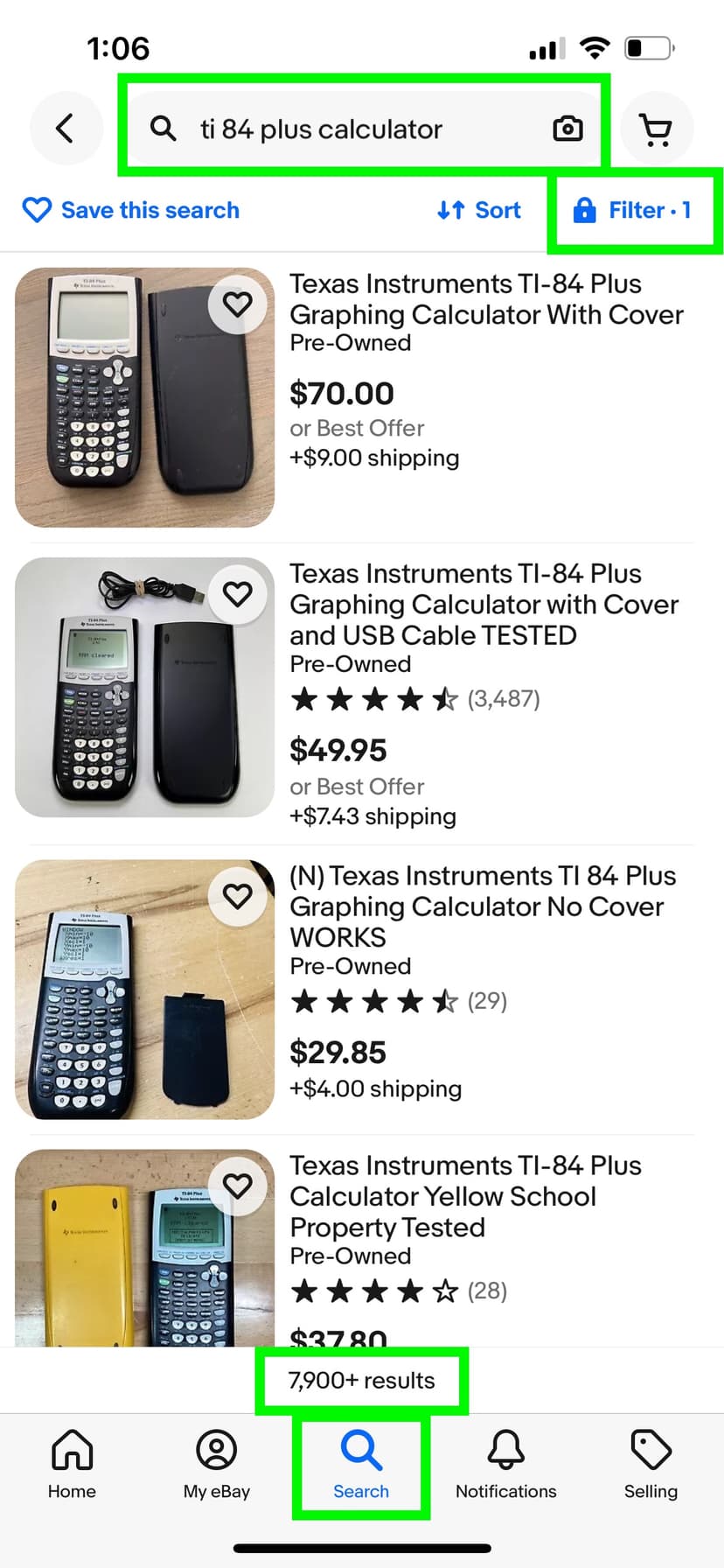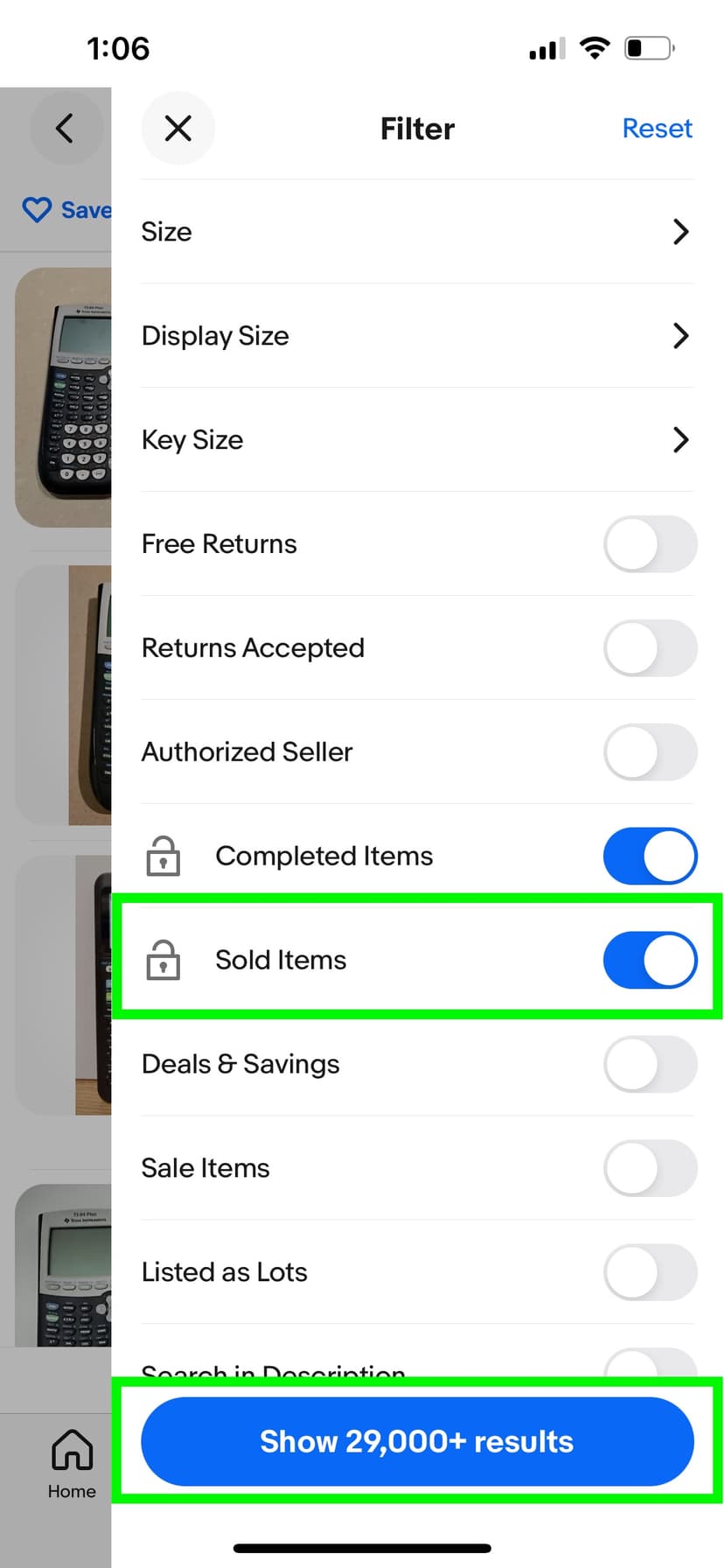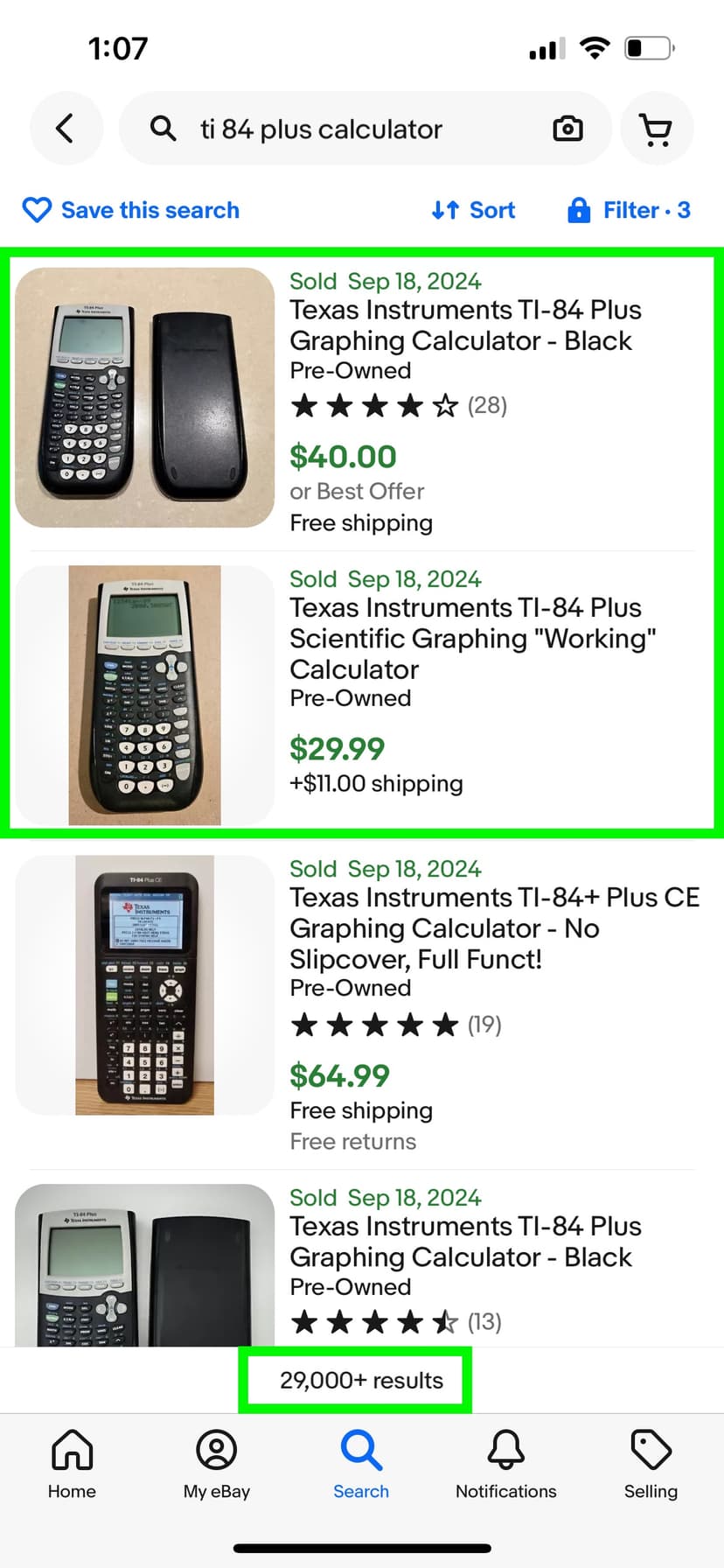eBay Complete Beginners Guide for Resellers
Let's start selling. eBay is a strong marketplace with a wide range of categories and a large global audience. Many resellers see most of their sales on eBay. In this guide we share what we learned after selling more than $1,000,000 of used goods on eBay, updated for 2025.
Top advice: sell what buyers already want. Use sold listings to confirm demand before you buy items to resell. Fast-moving inventory improves cash flow, raises account limits over time, and keeps items from piling up in your space.
What you will learn: account setup and limits, smart sourcing with sold data, research and sell-through math, listing structure and keywords, pricing and formats, shipping methods that save money, fee basics and Stores, and practical next steps to scale.
We are excited to join you on this. Start with one solid listing, learn from it, then repeat with better photos, titles with the best keywords, and pricing that sells. Set up your account, learn how eBay works, get a few sales, and build momentum. From there, keep growing as a reseller by learning more about products, eBay, and what to sell.
Contents
- What changed since older guides
- Step 1. Open your account and set up payouts
- Step 2. Find items to sell
- Step 3. Research prices and sell-through
- Step 4. Create a quality listing
- Step 5. Ship with care and save on labels
- After the sale: payouts, returns, feedback
- Avoiding scams and headaches
- eBay Stores, fees, and when to upgrade
- Next steps and useful tools
What changed since older guides
- Payouts run through eBay. You do not need PayPal to receive money. Add a bank account or debit card for payouts in Seller Hub.
- Most categories charge a final value fee of 13.6% plus a per-order fee of $0.40. Exact rates can vary including a slight discount for having a Basic or above store (12.7% + $0.40) or listings in specific categories. Fees are calculated on what the buyer pays: item price, shipping, and sales tax. eBay collects the sales tax and sends it to the state. You never receive the tax, but the fee is still calculated on it. For full details, revieweBay's Selling Fees article.
- Zero insertion fee listings: typical non-Store sellers on ebay.com receive 250 per month. Stores receive higher monthly allotments.
- USPS Ground Advantage replaced First-Class Package and most Parcel Select Ground. It is a common low-cost method for packages up to 70 lb.
Tax note: rules change often. Keep clean records and consult a tax professional.
Step 1. Open your account and set up payouts
Start by registering for an eBay account. Choose Personal if you are selling household items. Choose Business if you operate as a LLC, sole proprietor or company. You can switch from personal to business later.
- Go to Seller Hub and complete identity verification, business info, and payout details to a bank account or debit card.
- Turn on two-factor authentication. Keep your business email and bank account dedicated to selling for clean bookkeeping.
- Check Monthly selling limits in Seller Hub. Limits increase over time as you build a track record. You can request an increase about once every 30 days.
Step 2. Find items to sell
Start with items at home to learn pricing, listing, and shipping. Good first categories:
- Video games and consoles
- Digital cameras and lenses
- Old smartphones and tablets
- Brand name or vintage clothing
- Calculators like TI-84 Plus
Step 3. Research prices and sell-through
Search for your item on desktop or in the eBay app. First look at how many Active listings exist. Then filter to Sold to see the last 90 days of sales and typical prices.

Using Search tab, enter your item at the top. Jot down the number of Active Listings. Then tap Filter.

In Filter screen, scroll to Sold Items. Toggle this and show results.

On the sold listings view, jot down Sold count and sold prices of items similar to yours.
Sell-Through Rate (STR)
STR helps estimate how quickly an item sells. Formula:
STR (%) = Sold ÷ Active × 100
Example: 29,000 sold and 7,900 active for "ti 84 plus calculator" gives 367.09 percent. That is very strong. If STR is near 100 percent, typical sell time is within about 90 days. If STR is very low, consider skipping the item.
Tip: use exact model numbers on electronics for accuracy. For calculators, the TI-84 Plus CE version sells higher than base models.
Step 4. Create a quality listing
Photos
Photos sell your item. Use a plain background, ideally white. Show all angles and any flaws. For a deeper dive, see our eBay photo and lighting guide.
Title
Use up to 80 characters with relevant keywords. Lead with brand and item type, then model, size, color, material, and key attributes. Use eBay search autocomplete to find common terms.
Item specifics
Buyers filter by size, color, material, and more. Fill required and commonly filtered fields so your listing shows in filtered searches. Do not stress about filling in all options.
Category
Match the category most other sellers use for the same item. Example: a Green Bay Packers hoodie belongs in Fan Apparel and not in Clothing so it shows when buyers searches for the that item.
Condition and defects
Choose the correct condition. If not new, describe defects in the description. Clearly point out any flaws in both photos and the condition description. If the item is an electronic that is not working or untested use condition "For parts or not working".
Format and price
- Fixed Price is best for most items. Auctions are fine for rare items with strong demand.
- Price near recent sold comps. Remember fees and shipping when you plan profit.
- Typical fee in many categories is about 13.6 percent of the total amount of the sale up to a threshold per item, then a lower percentage above that, plus a per-order fee of $0.40 for orders over $10 or $0.30 for orders $10 and under. Check your category table.
Business policies
Use Shipping, Payment, and Return policies for consistent settings and easy bulk edits in Seller Hub. Choose Calculated Shipping unless you are experienced with free shipping baked into price.
Step 5. Ship with care and save on labels
Packaging
- Protect fragile items with bubble wrap. If you can feel an edge when pressing a wrapped corner, add more padding. Budget source: bubble wrap (eBay, $29 for 700 feet).
- Boxes should fit snugly. Fill voids with clean paper or air pillows. Shake test: nothing should move.
- Reusing boxes is fine if you fully remove or cover all old labels and hazardous or alcohol markings. Priority Mail branded supplies can only ship with Priority Mail.
- Cut down oversized boxes to reduce dimensional weight. Scoring the inside flaps and trimming height can meaningfully lower cost on big but light shipments.
- For soft, light items like clothing, use polymailers. Buying in bulk can bring cost near a few cents each. Example: bulk poly mailers (Amazon, $30-$50+ for 1,000 polymailers). I use sizes 10x13 and 12x15.5 to fit 99% of my clothing items.
Labels and services
- Online labels are cheaper than paying at the counter. eBay Labels and services like Pirate Ship use Commercial or better tiers that undercut retail counter rates.
- USPS Ground Advantage is often the best price under about 5 lb and is valid up to 70 lb. Typical delivery is about 2 to 5 business days depending on distance.
- Pirate Ship is a free option to access discounted USPS and UPS rates and quick rate comparisons: pirateship.com.
- Buy labels in Seller Hub so tracking posts to the order automatically. Optionally, add insurance for higher value shipments.
- Credit card rewards. Put shipping labels on a rewards card to earn cash back or points if that aligns with your finances. We outline stackable strategies here: credit card rewards on shipping labels.
Dimensional weight explained
Carriers price large, light boxes using dimensional weight. For USPS Ground Advantage and most USPS package services, if the box volume is over 1 cubic foot, compute DIM weight as (L × W × H) ÷ 166 in inches. If DIM is higher than scale weight, you pay for DIM. Enter exact size when buying the label. If you understate size, carriers can add a noncompliance or adjustment fee after the fact.
FedEx and UPS adjustments
- Measure carefully. UPS and FedEx can bill adjustments if your box measures larger or weighs more than you entered. That includes additional handling and audit fees.
- Round your measurements up to the next whole inch and weigh on a reliable scale to avoid surprises. We use: Accuteck digital scale (Amazon, $25) with detached display.
No printer? Use a QR code option
- USPS Label Broker: generate a QR code and have USPS print the label at the counter or supported kiosk for free. Works with Click N Ship and platforms that support Label Broker.
- eBay QR codes: for many USPS, UPS, and FedEx labels you can generate a QR code in eBay Labels and print at a participating drop off location.
Best ways to print labels at home
- Okay No printer at home. Use eBay Labels to generate a QR code and have USPS print it at the counter. You still get online rates that are lower than the retail counter. Drawback: you must wait in line and it slows your workflow.
- Basic Inkjet on regular paper with clear tape. Works as a beginner if you already own a printer, but inks costs add up and taping takes time.
- Good Laser/toner printer with half sheet adhesive labels. Lower supply cost per label and no taping. Works with a standard printer. Example: Half Sheet Shipping Labels (Amazon, $10).
- Better Generic 4×6 thermal label printer. No ink, fast print speed, and the exact 4×6 size carriers expect. Use fanfold or rolls. You can set label size to 4×6 in eBay Labels, Pirate Ship, and most carrier tools. These are direct thermal printers, so they do not use ink or toner. Heat activates the label coating, so the “ink” is in the paper.
- Budget printer: entry level 4×6 thermal printer (Amazon, $70)
- Fanfold Labels: 500 direct thermal labels (eBay, $9 for 500 at time of writing). Listings change and sell out, but you can often find about $10 for 500 labels, or cheaper when buying larger quantities.
- Best Rollo 4×6 thermal printer for a top branded choice. Reliable, widely supported, and quick to set up. Rollo USB (Amazon, $200) or Rollo Wireless (Amazon, $280).
Pro tips to save even more
- Reuse clean boxes from your community. Ask local stores for extras or check neighborhood groups. Always remove or cover old barcodes and addresses.
- For Priority Mail, only use USPS branded Priority supplies with Priority services.
- USPS is starting to roll out free USPS Ground Advantage packaging. Currently available for Poshmark sellers to order.
After the sale: payouts, returns, feedback
- eBay sends payouts to your bank account or debit card. New accounts may see temporary holds while history builds.
- Handle time matters. Ship within your stated handling time to avoid defects and to qualify for programs that reduce fees.
- Returns: for most items, offer 30 day returns. If an item is not as described, expect to accept a return.
- Feedback: aim for quick messages and on-time shipping. A short thank you note can earn repeat buyers.
Avoiding scams and headaches
- Keep all messages and payments on eBay. Requests to pay off platform are a red flag.
- Always ship with tracking that uploads to the order. Signature confirmation is smart for high value orders.
- Do not agree to partial refunds to keep damaged items unless you are certain. You can always direct the buyer to open a return for a full refund upon delivery back to you.
eBay Stores, fees, and when to upgrade
You do not need a Store to start. Upgrade when your monthly listings or fee savings justify the subscription.
- Typical non-Store sellers on ebay.com receive 250 zero insertion fee listings per month.
- Store tiers: Starter, Basic, Premium, Anchor, and Enterprise. Store subscribers get higher monthly zero insertion fee allotments, fee discounts by category, and extra tools.
- Top Rated Plus discount: if you are Top Rated and offer same or one-business-day handling and 30 day free returns on a listing, that listing earns a 10 percent discount on the final value fee portion that is percentage based. The per-order fee is not discounted.
- Use our eBay Fee Calculator to calculate exact fees on any item price and see when to upgrade to a store based on your sales volume.
Fee tables change. Before you scale, review current fee pages for your exact categories.
Next steps and useful tools
- Build a simple SKU system and inventory shelf map so you can locate items fast after a sale.
- Batch your workflow: research, photograph, and list in blocks.
- Explore eBay Product research in Seller Hub for deeper data like sell-through, price ranges, and trends.
- Try Flipper Tools to streamline listing and cross-listing, and to build better titles with consistent item specifics.
You now have the basics to list, ship, and get paid. Keep learning by reviewing your own sold data and by checking how top listings in your category write titles, photograph items, and price.